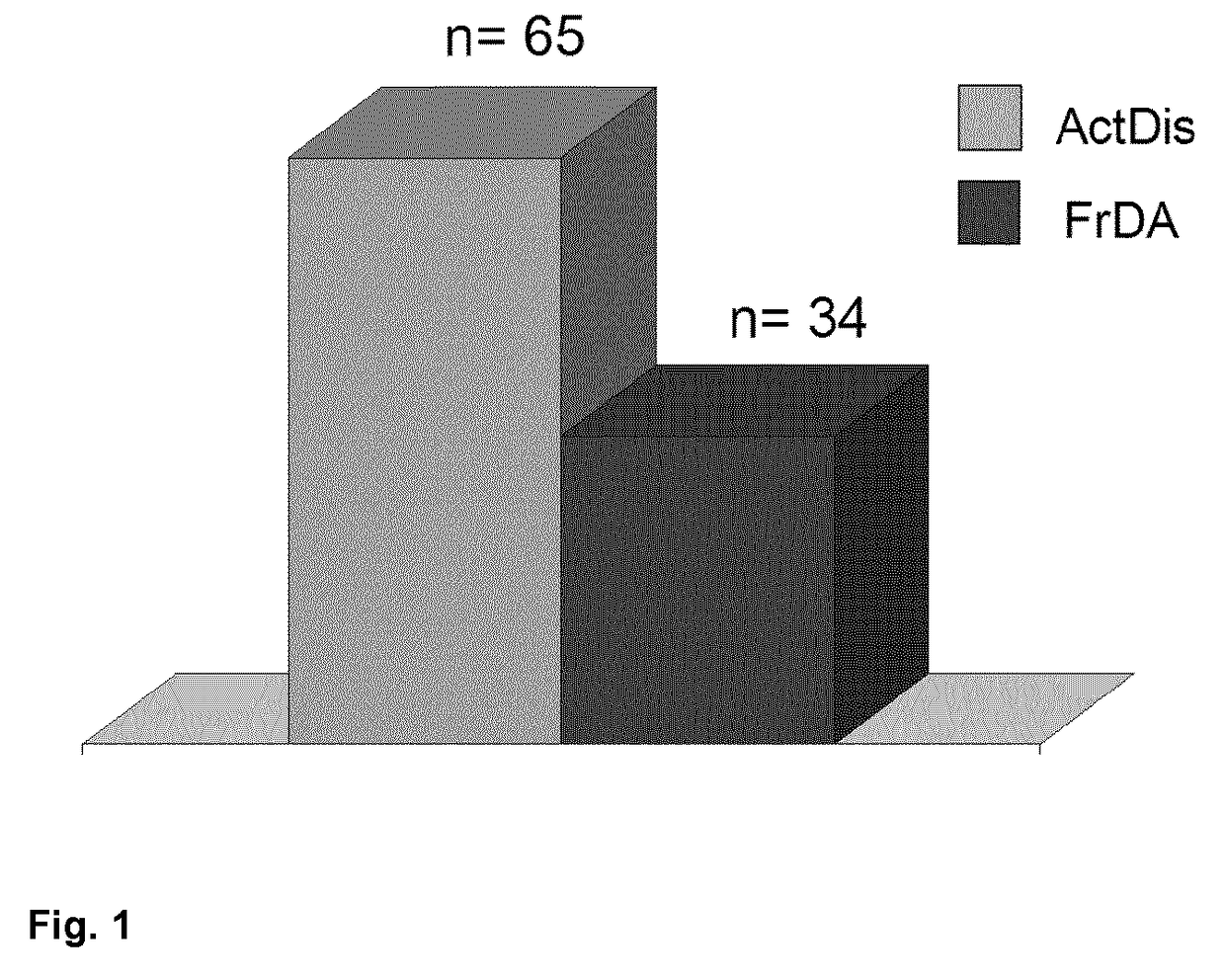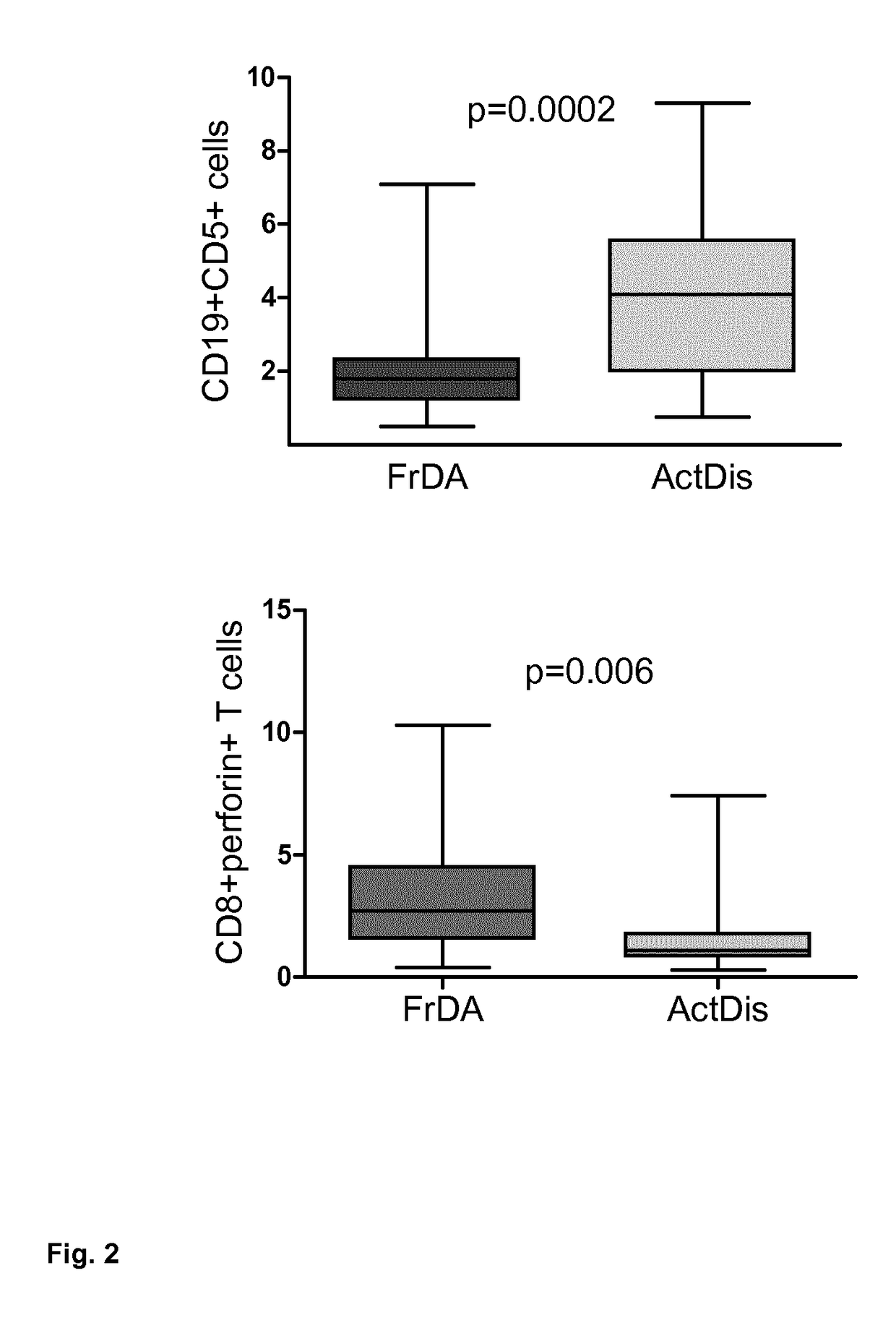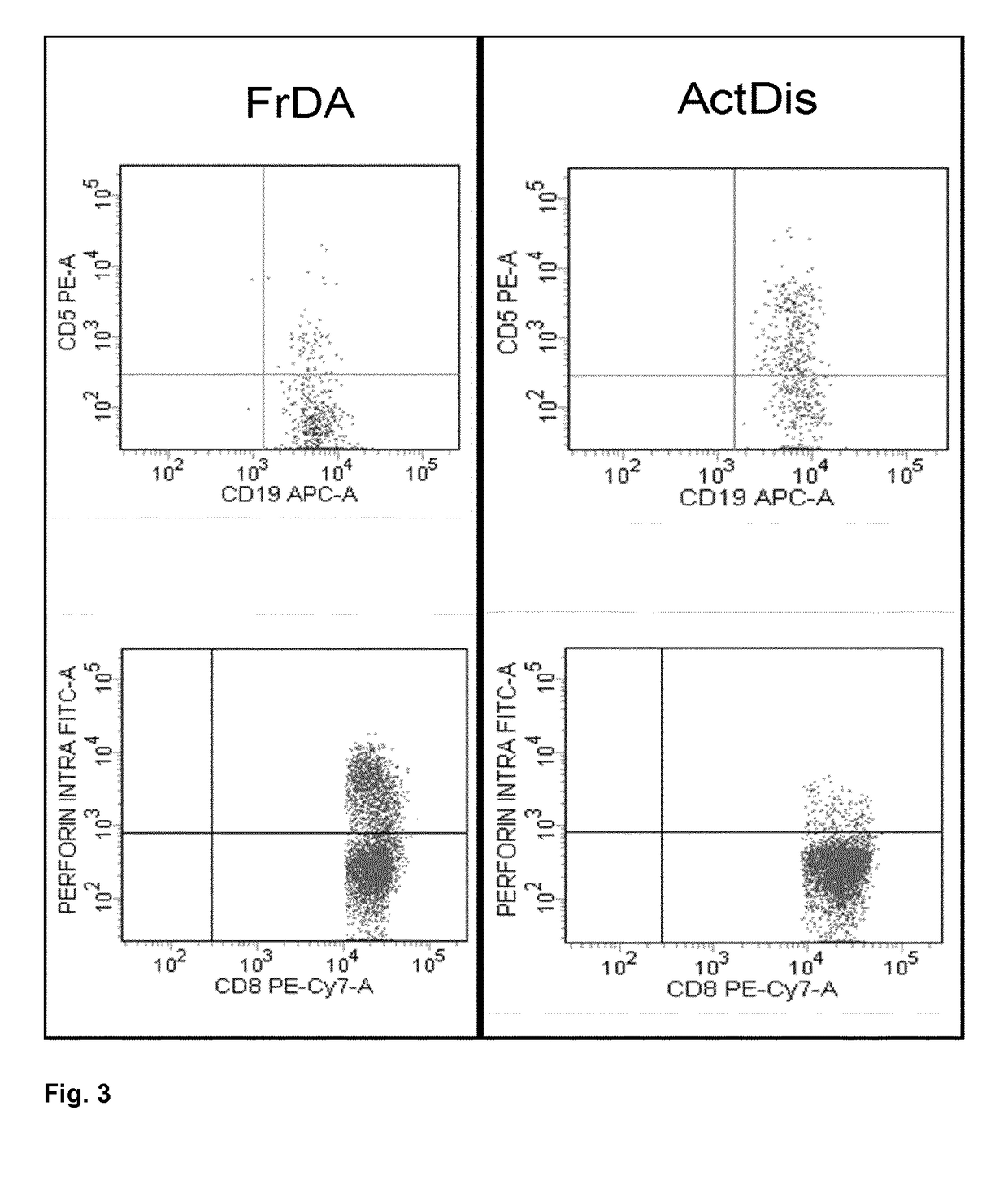Method of predicting response of a human subject suffering from multiple sclerosis to interferon beta, (ifn-ß)
a human subject and multiple sclerosis technology, applied in the field of medical devices, can solve the problems of injection site reactions, flulike symptoms, headache, fatigue, etc., and achieve the effect of easy and reliable in vitro
- Summary
- Abstract
- Description
- Claims
- Application Information
AI Technical Summary
Benefits of technology
Problems solved by technology
Method used
Image
Examples
example 1
Preparing the Samples for the Determination of the Percentage of CD5+CD19+CD45+ B Cells by Flow-Cytometry
[0084]Introducing 50 μl of heparinized whole whole peripheral blood into two polystyrene tubes of 12×75 mm (sample tubes). Adding to each sample tube a mixture of monoclonal antibodies to be used in the determination of surface antigens. Said mixture comprising labelled monoclonal antibodies: anti-CD19-PE-Cy7, anti-CD3-APC and anti-CD45-APC-H7, wherein each of these monoclonal antibodies is found at a concentration of about 0.2 μg / μl. Incubating the sample tubes in the dark at room temperature for 20 minutes.
[0085]Adding 1.5 ml of FACS Lysing Solution (diluted 1 / 10 in distilled water) to each sample tube to remove erythrocytes. Incubating for 10 minutes in the dark at room temperature and centrifuging the sample tubes at 300 g for 7 minutes, to remove lysed red blood cells. Decanting the supernatant and re-suspending it in the residual volume.
[0086]Adding 3 ml of saline serum per...
example 2
Preparing the Samples for the Determination of the Percentage of CD45+CD8+perforin+CD56-CD3+ T Cells by Flow-Cytometry
[0088]Introducing 50 μl of heparinized whole peripheral blood into two polystyrene tubes of 12×75 mm (sample tubes). Adding to each sample tube a mixture of monoclonal antibodies to be used in the determination of surface antigens. Said mixture comprising labelled monoclonal antibodies: anti-CD8-PE, anti-CD3-PercP, anti-CD56-APC and anti-CD45-APC-H7, wherein each of these monoclonal antibodies is found at a concentration of about 0.2 μg / μl;
[0089]Incubating the sample tubes in the dark at room temperature for 20 minutes. Adding 3 ml of saline serum per sample tube and centrifuging at 300 g for 7 minutes. Decanting the supernatant and re-suspendeding it in the residual volume.
[0090]Adding 200 ul of Cytofix / Cytoperm (or any other fixation / permeabilization solution), stir in the vortex and incubate for 20 min at 4° C. and in darkness. Adding 2 ml of Perm / Wash Buffer (1 / 1...
PUM
| Property | Measurement | Unit |
|---|---|---|
| concentration | aaaaa | aaaaa |
| concentration | aaaaa | aaaaa |
| concentration | aaaaa | aaaaa |
Abstract
Description
Claims
Application Information
 Login to View More
Login to View More - R&D
- Intellectual Property
- Life Sciences
- Materials
- Tech Scout
- Unparalleled Data Quality
- Higher Quality Content
- 60% Fewer Hallucinations
Browse by: Latest US Patents, China's latest patents, Technical Efficacy Thesaurus, Application Domain, Technology Topic, Popular Technical Reports.
© 2025 PatSnap. All rights reserved.Legal|Privacy policy|Modern Slavery Act Transparency Statement|Sitemap|About US| Contact US: help@patsnap.com



